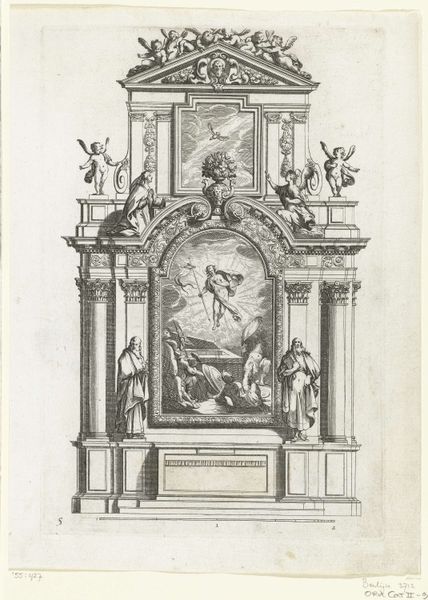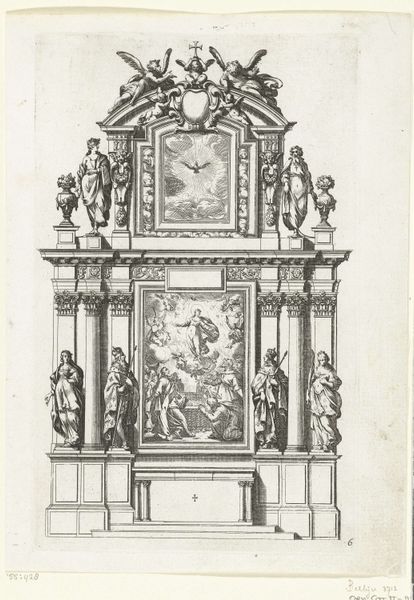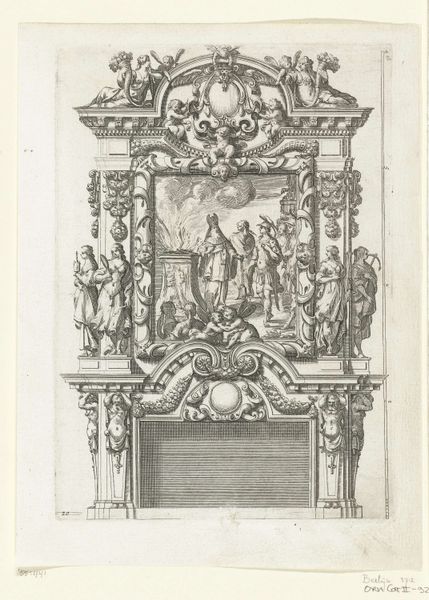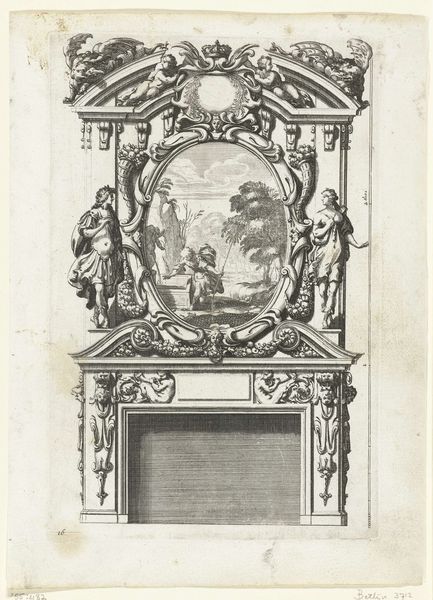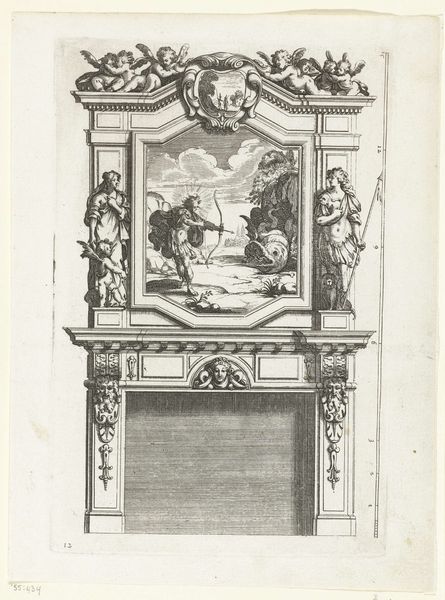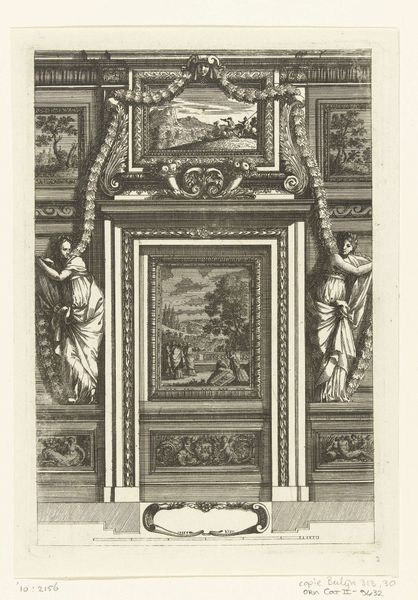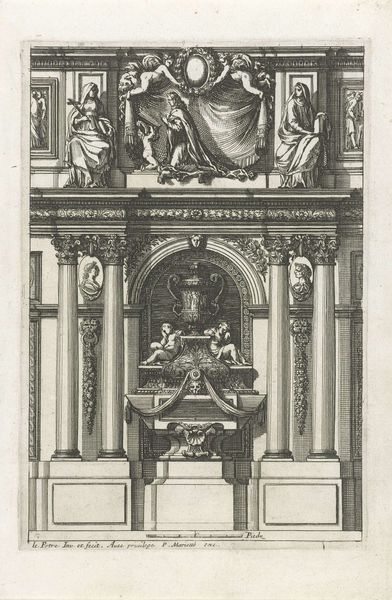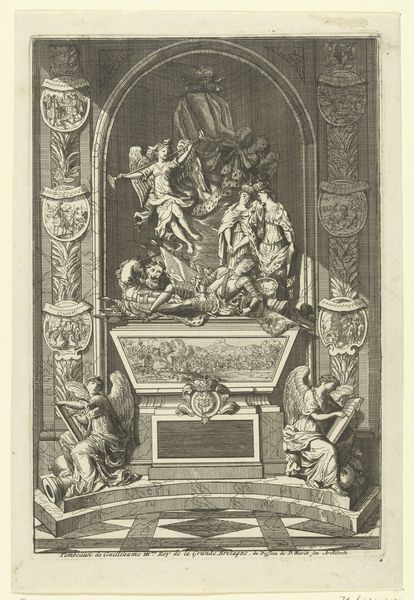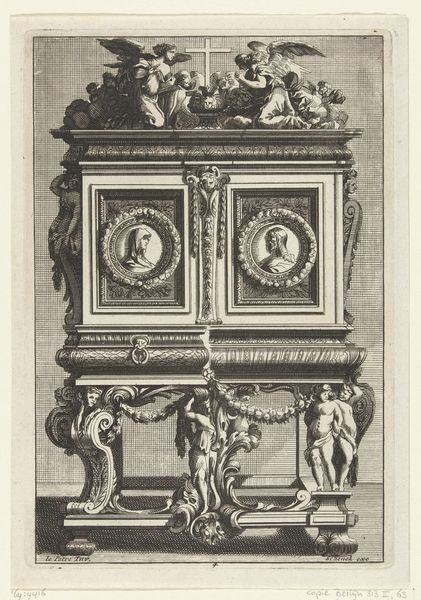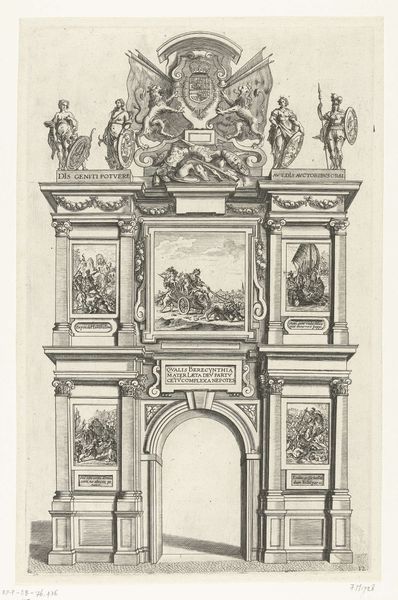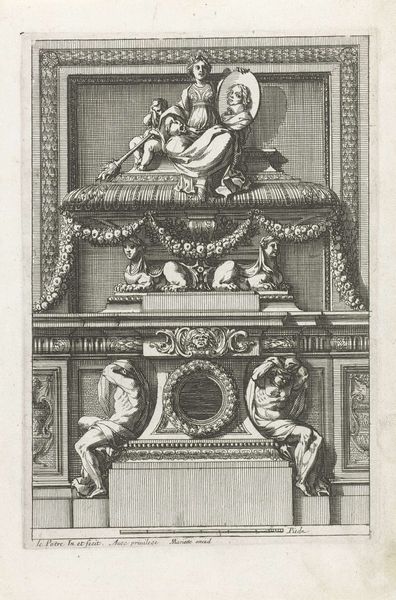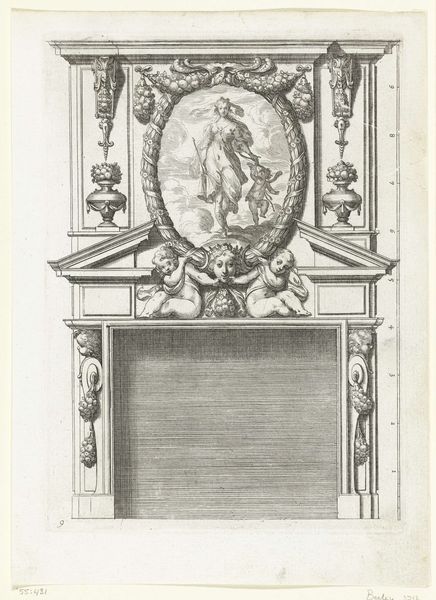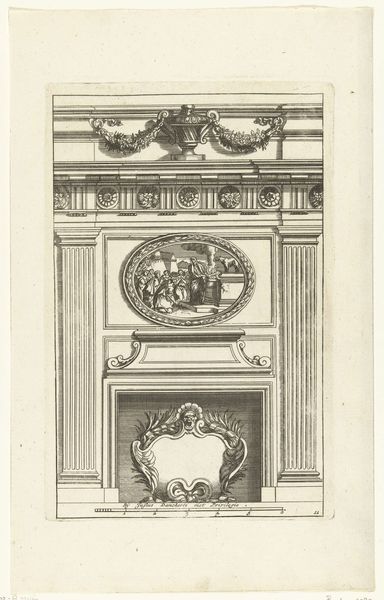
Dimensions: height 206 mm, width 150 mm
Copyright: Rijks Museum: Open Domain
Curator: This engraving, currently housed at the Rijksmuseum, presents "Onderboezem, schacht gedecoreerd met ridder te paard", attributed to Abraham Bosse and dating from before 1643. Editor: It's... grand. So much detail crammed into one decorative structure. The knight, of course, immediately catches the eye, but it feels more about ostentation than genuine martial prowess. Curator: Indeed, the knight's depiction sits nestled within a rich tableau of symbolic elements. Observe the angels, the heraldry, and the statuary flanking the central panel. It's a fascinating accumulation of status markers, indicative of power and authority during the period. Editor: Those angels have a very interesting weight; it's strange seeing such mortal expressions. Their placement does lend the fireplace a protective aspect, doesn't it? Almost warding off misfortune from the home itself. Are they common on this kind of object? Curator: Not necessarily, though angelic figures consistently represented divine protection and intercession in Baroque symbolism. Bosse skillfully integrates classical and religious imagery to elevate the mundane to the aspirational. Fireplaces themselves occupied a central domestic space and their decoration would offer opportunities to signal wealth. Editor: So, a sort of constant reminder, burning bright in the hearth of their status, quite literally! The central panel's turbulent scene also evokes a sense of constant struggle, maybe the eternal battle between good and evil... but viewed from the warmth and comfort of one's home. The whole design is designed to bring attention, isn't it. Curator: Certainly, it's designed to impress upon viewers the elevated status of the person or family who owned such an object. Every element contributes to that intention. But it is so strange that Bosse dedicated so much effort here without any colors! It is striking in a very precise way. Editor: Looking closely now, there's almost a miniature stage quality about it; these are all actors or props placed for the sake of theater. Perhaps designed more for appearance than practical utility in its moment? I'd argue so, although not always a value judgment to that claim! Curator: Well, contemplating how domestic art can become intertwined with messages of power and ambition certainly invites us to reconsider the nature of art and the social spaces that are so marked with that intention. Editor: Exactly. A fine example that visual symbols always have meaning, however subtle.
Comments
No comments
Be the first to comment and join the conversation on the ultimate creative platform.
